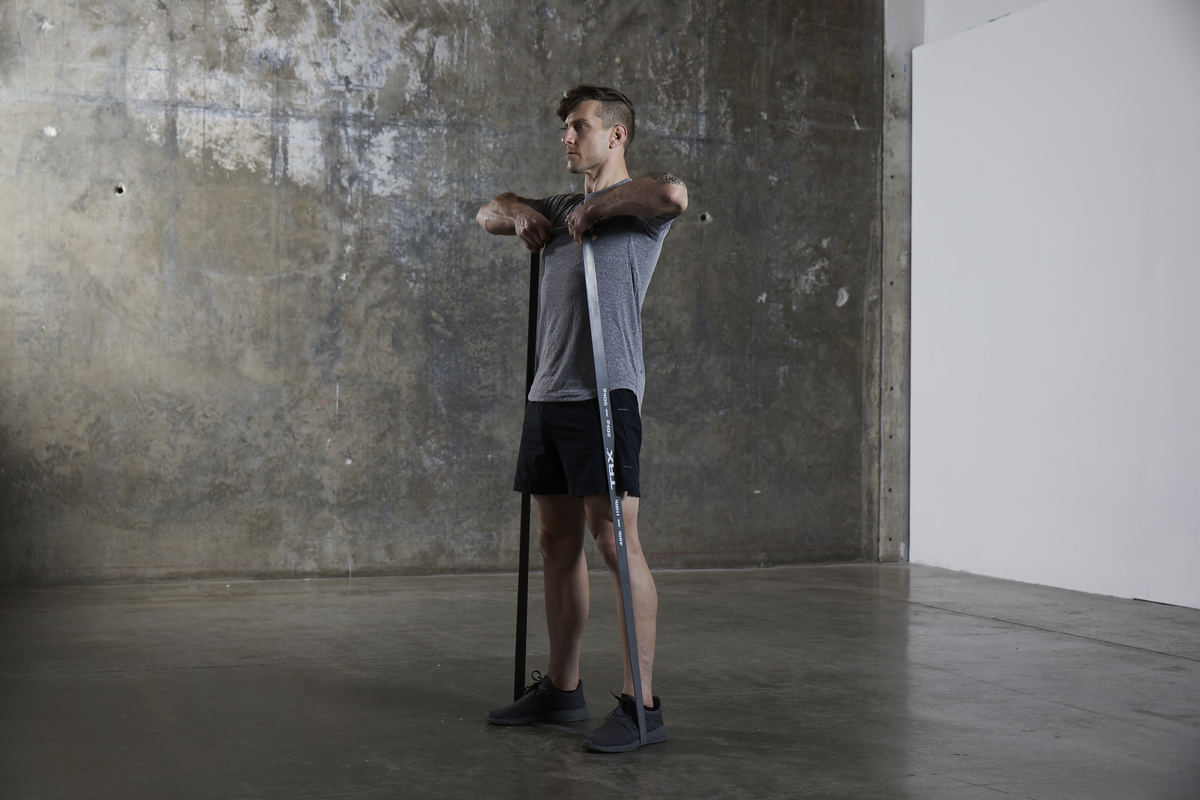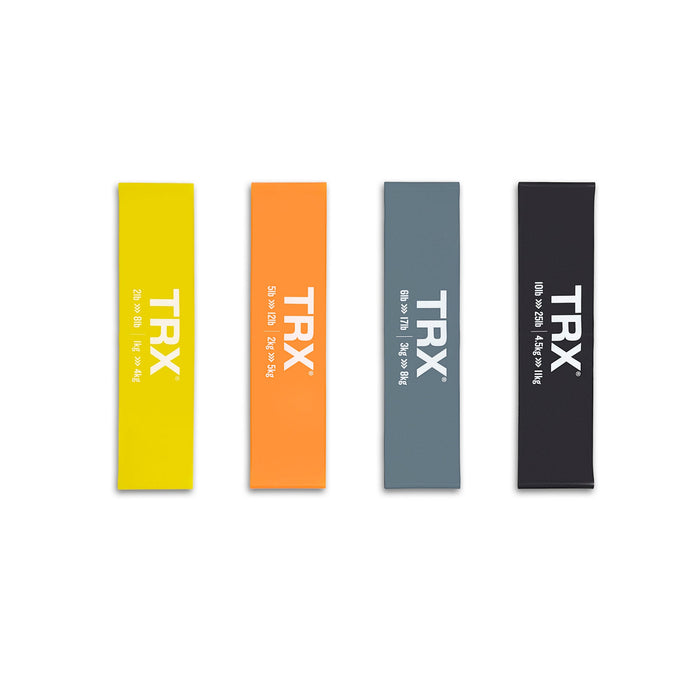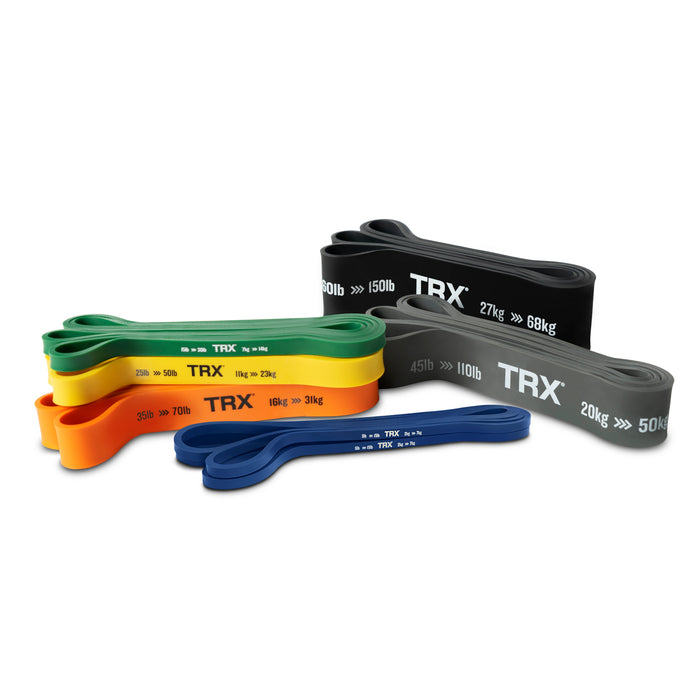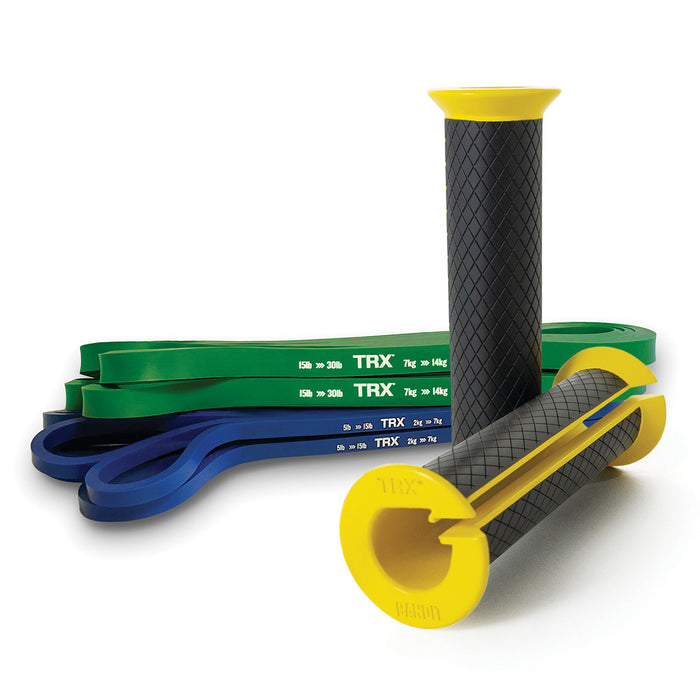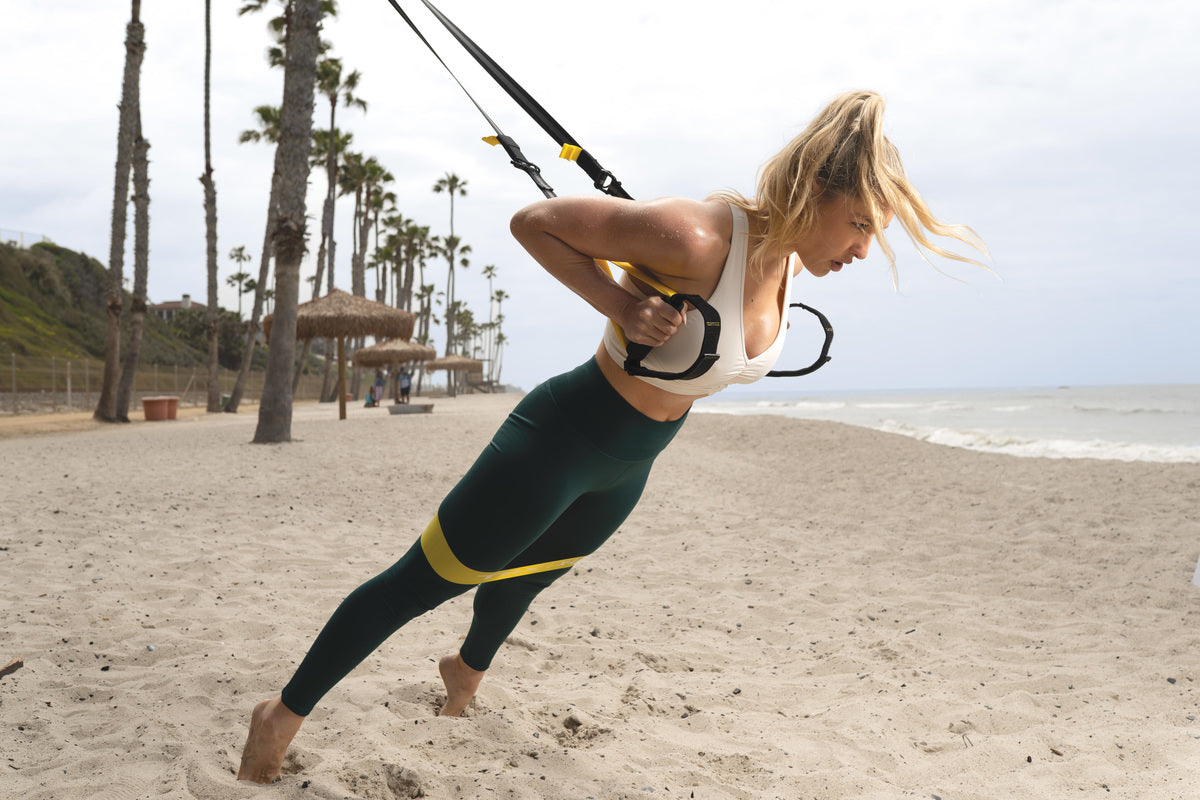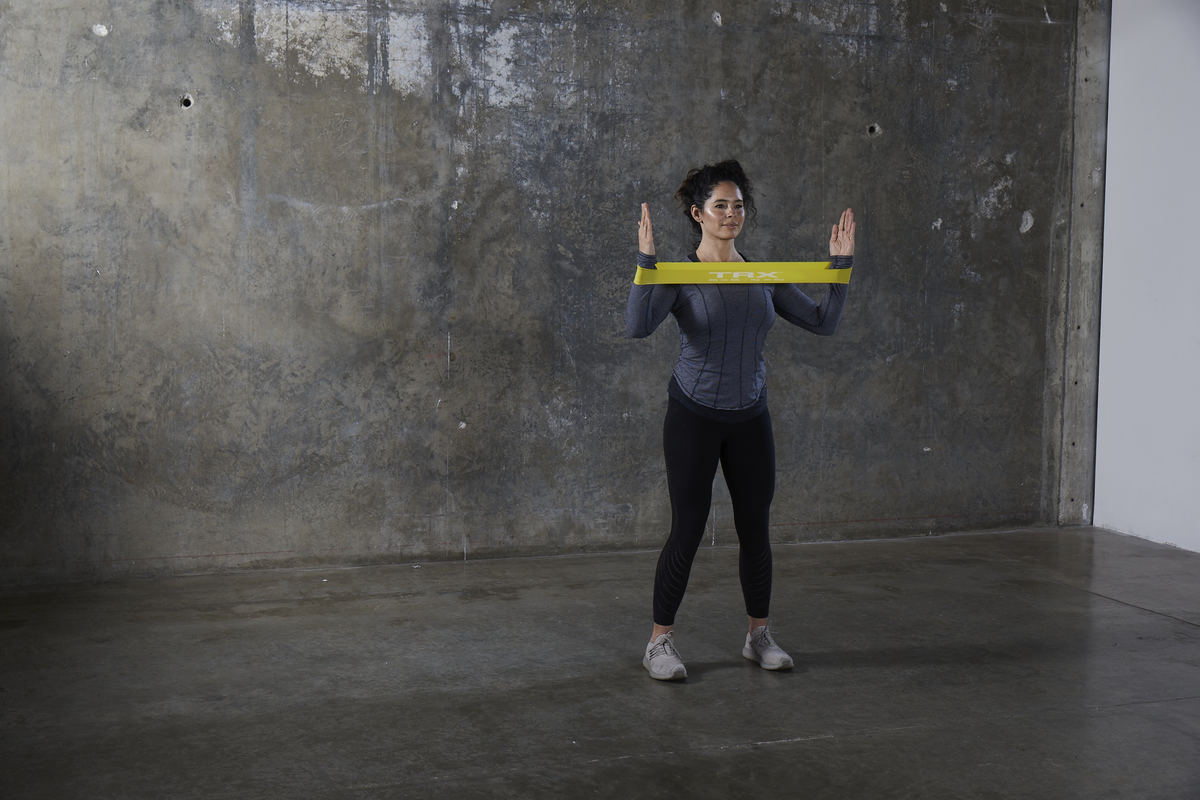Shoulders are tricky to exercise. You need to strengthen them if you want your body to stay healthy, but they can easily be overworked and injured. That’s why shoulder exercises with resistance bands are so powerful.
You can train at a high intensity while also minimizing the risk of a tear or strain. That’s why today, we’re going to cover some of the best resistance band shoulder exercises you can add to your workout. We’ll also take a look at some benefits and leave you with a workout you can try today. Let’s get started!
Benefits of Using Resistance Bands
There are a number of benefits that come with using resistance bands. Let’s take a look at the three biggest advantages that make this piece of resistance training equipment so desirable.
Safe & Low-Stress
When it comes to safety and injury prevention, resistance bands emerge as an exceptional choice for shoulder exercises. Unlike traditional weights that exert constant downward force, resistance bands provide a controlled level of resistance throughout the entire range of motion.
This gentle yet effective resistance minimizes the risk of sudden strain or overexertion on your shoulders, reducing the likelihood of injury. Additionally, resistance bands allow for smooth, fluid movements, promoting better joint stability and muscle activation. With their forgiving nature and low impact on joints, resistance bands provide a safe way for individuals of all fitness levels to strengthen and tone their shoulders without compromising their well-being.
Portable & Inexpensive
One of the remarkable advantages of incorporating resistance bands into your fitness regimen is their exceptional portability and affordability. Unlike bulky exercise machines or extensive sets of weights, resistance bands are incredibly compact and lightweight, making them a convenient choice for workouts on the go.
This means you can do your strength training at home, on a beach, or basically anywhere that gives you enough space to complete the movement.
Resistance Can Be Modified to Your Strength Levels
Resistance bands provide variable resistance throughout the movement. As you stretch the band, the tension increases, resulting in a higher level of resistance at the peak of the exercise. This unique characteristic allows you to customize the level of resistance to suit your individual needs and goals.
As you extend the band, the tension and resistance intensify, challenging your muscles throughout the entire range of motion. This versatility not only allows you to vary the difficulty of exercises but also opens up a wide array of movements and angles to target specific muscles. Whether you're aiming to build strength, increase flexibility, or rehabilitate an injury, resistance bands offer a dynamic and adaptable tool that can be tailored to your desired level of intensity, making them an invaluable addition to any fitness regimen.
The Best Resistance Band Shoulder Exercises
Here's the gear you'll need:
10. Band Pull-Apart
This deceptively simple movement targets multiple muscles in your upper body, helping to improve posture, enhance shoulder stability, and boost overall upper body strength. With just a resistance band and a few minutes a day, you can reap the remarkable benefits of this exercise and elevate your fitness game to new heights.
- Stand tall with your feet shoulder-width apart and hold the resistance band with a neutral grip, hands positioned slightly wider than shoulder-width apart.
- Extend your arms straight out in front of you at shoulder height, ensuring there's tension in the band.
- Keeping your arms straight, engage your core and pull the band apart by moving your arms outward and away from each other. Focus on squeezing your shoulder blades together.
- Continue pulling the band apart until your arms are extended out to your sides, parallel to the ground. Pause briefly, feeling the contraction in your upper back muscles.
- Slowly reverse the movement by bringing your arms back to the starting position, maintaining control and tension in the band.
- Repeat for the desired number of reps
9. Overhead Band Pull-Apart
If you're seeking an exercise that targets and strengthens your shoulders and upper back while engaging your core, the overhead band pull apart exercise is your answer. This dynamic movement combines the benefits of resistance bands with an overhead position, offering an extra challenge that enhances shoulder strength, stability, and posture.
- Stand tall with your feet hip-width apart and hold the resistance band with a pronated grip, hands shoulder-width apart.
- Lift the band overhead, extending your arms fully while maintaining tension in the band.
- Keeping your arms straight, engage your core and pull the band apart by moving your arms outward and away from each other. Focus on squeezing your shoulder blades together throughout the movement.
- Pause briefly, feeling the contraction in your upper back and shoulders.
- Slowly reverse the movement by bringing your arms back to the starting position, maintaining control and tension in the band.
- Repeat for the desired number of reps
8. Lateral Raise
This targeted movement specifically hones in on the lateral deltoids, helping you achieve that desirable shoulder width and shape. By utilizing the resistance band, you’ll work with variable resistance versus the constant resistance a dumbbell provides. Resistance bands are more joint-friendly and the elastic nature of the bands reduces the stress placed on the joints,
- Stand tall with your feet hip-width apart, holding the resistance band with a neutral grip, palms facing inward.
- Place the resistance band under your feet or step on it to secure it in place. Keep a slight bend in your elbows and maintain tension in the band.
- Keeping your core engaged and your back straight, lift both arms out to the sides until they are parallel to the ground. Focus on using the side of your shoulders to raise the bands, avoiding excessive swinging or using momentum.
- Pause for a moment when your arms are parallel to the ground, feeling the contraction in your lateral deltoids.
- Slowly lower your arms back to the starting position, maintaining control and tension in the band.
- Repeat for the desired number of reps
7. External Side Rotation with Bands
When it comes to performing the external side rotation exercise, using a resistance band makes a very noticeable difference. Not only does it provide targeted resistance to strengthen and stabilize the rotator cuff muscles, but it also offers a range of benefits that surpass traditional methods.
- Begin by attaching a resistance band to a sturdy anchor point at waist level. Stand with your side facing the anchor, and hold the band with the hand of the same side.
- Position your elbow bent at a 90-degree angle, with your upper arm parallel to the ground. Your forearm should be perpendicular to the ground, grasping the band's end.
- Keeping your elbow fixed against your side, slowly rotate your forearm away from the anchor point. Maintain control and tension in the band throughout the movement.
- Continue the rotation until your forearm is parallel to the ground, feeling the contraction in your rotator cuff muscles.
- Slowly rotate your forearm back to the starting position under control, maintaining resistance in the band.
- Repeat for the desired number of reps
6. Reverse Fly:
Performing the reverse fly exercise strengthens your upper back, improves posture, and enhances overall shoulder stability. When using a resistance band as your go-to equipment for this exercise, you unlock the advantage of variable tension. As you stretch the band, the level of resistance increases, intensifying the challenge at different points in the range of movement.
- Begin by standing tall with your feet shoulder-width apart. Hold the resistance band with a neutral grip, palms facing each other. Create tension in the band by stepping on its middle with both feet.
- Slightly hinge forward, keeping your back straight and core engaged.
- Open your arms out to the sides, away from your body keeping a slight bend in your elbows. Maintain tension in the band throughout the exercise.
- Pause briefly when your arms are fully extended out to the sides, focus on squeezing your shoulder blades together and feeling the contraction in your upper back and rear delts.
- Slowly bring your arms back to the starting position, maintaining control and tension in the band.
- Repeat for the desired number of reps
5. Front Raise
This exercise specifically targets the front deltoids, helping you achieve a well-rounded shoulder and upper-body physique. By incorporating resistance bands, you can easily adjust the resistance level to suit your fitness level and gradually progress over time.
- Begin by standing tall with your feet shoulder-width apart. Grasp the resistance band with a neutral grip, palms facing your thighs. Step on the band's middle to create tension.
- Hold the band in front of your thighs with your arms fully extended, keeping a slight bend in your elbows. Maintain tension in the band throughout the exercise.
- Keeping your back straight and core engaged, slowly lift the band forward and upward, raising your arms in front of you. Focus on leading the movement with your shoulders and maintaining control.
- Pause briefly when your arms are parallel to the ground, feeling the contraction in your front deltoids.
- Slowly lower the band back to the starting position, maintaining control and tension in the band.
- Repeat for the desired number of reps
4. Standing Row:
Say hello to sculpted shoulders with the standing row exercise using a resistance band. This powerhouse move targets your deltoids, rhomboids, and trapezius muscles, helping you build strength and improve posture. The resistance band adds an extra layer of challenge by providing variable tension throughout the movement, activating more muscle fibers for maximum gains.
- Begin by stepping on the center of the resistance band with your feet shoulder-width apart. Grasp the band with a neutral grip, palms facing each other.
- Stand tall with a slight bend in your knees and hinge forward from your hips, maintaining a flat back. Let your arms hang straight down, fully extended.
- Engage your back muscles, retract your shoulder blades, and pull the band toward your body, leading with your elbows. Focus on squeezing your back muscles as you pull the band toward your lower chest.
- Pause briefly when your elbows are fully flexed and your shoulder blades are squeezed together, feeling the contraction in your upper back.
- Slowly and with control, straighten your arms to return to the starting position, maintaining tension in the band.
- Repeat for the desired number of reps
3. Standing Shoulder Press With Bands
When it comes to the standing shoulder press, opting for a resistance band over dumbbells brings a whole new level of benefits to your workout. Unlike dumbbells that provide constant resistance, resistance bands offer variable tension throughout the movement. This means that as you press upwards, the tension increases, challenging your muscles even more at the top of the exercise. Additionally, resistance bands promote greater muscle activation by engaging stabilizer muscles that may not be fully utilized with traditional weights.
- Begin by standing with your feet shoulder-width apart, positioning the resistance band underneath your feet. Hold the band with a neutral grip, palms facing forward, and bring your hands up to shoulder level.
- Bend your elbows at a 90-degree angle, with your upper arms parallel to the ground. This is your starting position.
- Push the resistance band upward by extending your arms fully, focusing on pressing through your shoulders. Keep your core engaged and maintain a stable lower body throughout the movement.
- Pause briefly when your arms are fully extended overhead, feeling the contraction in your shoulders.
- Slowly lower the resistance band back to the starting position under control, maintaining tension in the band throughout.
- Repeat for the desired number of reps
2. Shoulder Extensions
If you're seeking an effective exercise to target your rear deltoids and strengthen the muscles along your upper back, the resistance band shoulder extensions are a game-changer. Shoulder extensions focus on toning the delts to achieve a balanced and toned appearance.
- Begin by attaching the resistance band to a sturdy anchor point at chest level. Stand facing the anchor, grasping the band with an overhand grip, hands shoulder-width apart.
- Step back to create tension in the band. Stand tall with your feet hip-width apart, maintaining a slight knee bend. Your arms should be extended straight in front of you, shoulder-width apart.
- Keeping your back straight and core engaged, pull the resistance band backward by retracting your shoulder blades and extending your arms backward. Focus on squeezing your rear delts as you bring your arms behind your body.
- Pause briefly when your arms are fully extended backward, feeling the contraction in your rear deltoids.
- Slowly and with control, bring your arms back to the starting position, maintaining tension in the band throughout.
- Repeat for the desired number of reps
1. External Up Rotation With Bands
If you're looking to strengthen and stabilize your rotator cuff muscles, the external up rotation with resistance bands is a highly effective exercise to incorporate into your routine. This exercise specifically targets the external rotators of the shoulder, helping to enhance shoulder stability, prevent injuries, and improve overall upper-body strength.
- Begin by attaching the resistance band to a secure anchor point at waist level. Stand perpendicular to the anchor point, and hold the band with your hand closest to the anchor.
- Position your elbow bent at a 90-degree angle, with your upper arm parallel to the ground. Your forearm should be positioned across your body, gripping the band.
- Keeping your elbow fixed against your side, slowly rotate your forearm away from your body, moving upward and away from the anchor point. Focus on engaging your external rotator muscles.
- Pause briefly when your forearm is perpendicular to the ground, feeling the contraction in your external rotator muscles.
- Slowly and with control, rotate your forearm back to the starting position, maintaining resistance in the band throughout.
- Repeat for the desired number of reps
Try This Resistance Band Shoulder Workout
Now that we’ve gone over the best shoulder exercises to do with resistance bands, it’s time to incorporate these movements into a workout. Each exercise in this routine is carefully selected to target different areas of the shoulder so that you develop the entire area.. So, grab your resistance bands, this workout routine is going to challenge your shoulder from every angle.
- Resistance Band Standing Shoulder Press:
- Reps: 12-15 reps
- Sets: 3 sets
- Rest: 45-60 seconds
- Resistance Band Lateral Raise:
- Reps: 10-12 reps
- Sets: 3 sets
- Rest: 45-60 seconds
- Resistance Band Reverse Fly:
- Reps: 12-15 reps
- Sets: 3 sets
- Rest: 45-60 seconds
- Resistance Band Front Raise:
- Reps: 10-12 reps
- Sets: 3 sets
- Rest: 45-60 seconds
- Resistance Band External Up Rotation:
- Reps: 12-15 reps (each side)
- Sets: 3 sets
- Rest: 45-60 seconds
For more workouts like the one above, try a free class at the TRX Training Club!
What to Look for in Your Resistance Bands
Unfortunately, not all resistance bands are made the same. Some resistance bands are not effective and won’t provide you the workout you’re looking for. To make sure you get the most from your workout, here’s what to look for in resistance bands:
- Comfortable material
- Proper tension and stretch
- Variety of weights
Typically, resistance bands come in bundles so look for bands that provide a variety of weights. Furthermore, you’ll want to choose material that doesn’t chafe your skin as you stretch the band out.
However, arguably the most important feature is the tension and stretch of the band. You need to make sure the resistance band can stretch in every range of motion you need. Otherwise, you won’t be able to do the exercise.
Where to Buy Resistance Bands
TRX Training resistance bands are great for fitness enthusiasts of all levels. Our exercise bands can complete all of the highlighted shoulder exercises above and are made to last. You can easily adjust the intensity of your workouts and move at different intensities. Try them today.
Train With Resistance Bands Today
Now, you see how powerful resistance bands truly are. You can do a variety of shoulder exercises with resistance band and receive the same quality of exercise as you would if you were using weights.
Combine the resistance exercises we’ve shared and use them in our legs and shoulders workout or our shoulder supersets we’ve covered. The possibilities are endless. Regardless of what you do, try using resistance bands in your next workout and see how it can change your workouts today.

